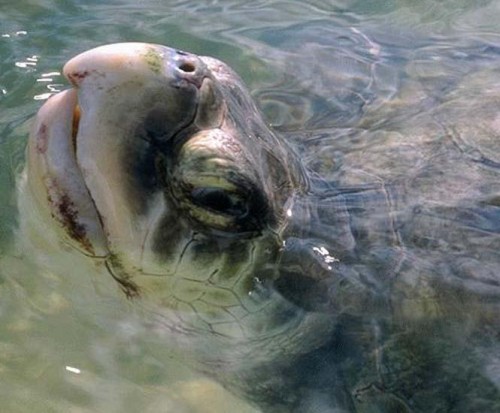Theatre
March 3, 2008March 5
March 5, 2008U.S., Mexico cooperate on reviving Kemp’s Ridley sea turtle
Of the eight species of sea turtles in the world, the Kemp’s Ridley, Lepidochelys kempii, has been considered the most endangered. It is also the smallest sea turtle and the only species that nests primarily during the daytime.
The Kemp’s Ridley nests only in the Gulf of Mexico, mostly on Mexican beaches. But about 100 nests have been found on U.S. beaches in recent years.
In 1978, a collaborative program between Mexico and the United States was established to monitor and protect the turtles and to try to restore this species’ population to a self-sustainable level. In 1981, the U.S. Fish and Wildlife Service asked the Gladys Porter Zoo in Brownsville, Texas, to administer the United States’ field portion of the effort. To date, the zoo still carries out that role.
The success of the Kemp’s Ridley program has made it a case study in the environmental literature on endangered species recovery. In fact, discussion has started on the possibility of delisting the species within the next 10 years.
Populations of the Kemp’s Ridley were declining at an alarming rate from the 1940s to the 1980s. A film made in 1947 showed an estimated 40,000 female Kemp’s Ridleys nesting on one beach. This was the first time that this type of massive synchronized nesting behavior had been documented. This extraordinary phenomenon is termed “arribada” or “arribazon” in Spanish. It has two literal translations: “great arrival” and “to put into port under stress,” both of which are appropriate.
Over the last 28 years, Mexican and U.S. biologists have learned a lot about the biology of nesting sea turtles. It is now known that most turtles nest only every other year. There are about three nests per female per season, each clutch being one hundred or so eggs which require 42 to 62 days incubation, depending on the temperature. Although some nests have been recorded as early as the first week of March, most Kemp’s Ridleys begin nesting around the second week in April.
Some turtles which were originally tagged on the eastern seaboard of the U.S. returned to Mexico to lay their eggs. Turtles from batches of laboratory-started juveniles on Padre Island National Seashore have also nested in Mexico during the same season. Apparently, the laboratory “head started” turtles were able to navigate to Padre Island National Seashore and were then able to interact with wild Ridleys returning to their historic nesting grounds on Mexico’s Tamaulipan coastline.
Kemp’s Ridley turtles will return to nearly the same spot on the beach where they nested in previous seasons. If they are disturbed, they possess the behavioral “plasticity” to move a few kilometers down the beach to a new nest site. In past years, a few Ridleys have been found at night, even though the norm for this species is diurnal (or daytime) nesting.
While the number of registered nests fluctuates between seasons, the number of released Kemp’s Ridley hatchlings from the six major camps in Mexico has been climbing fairly steadily since 1996, and 2007 saw a record 15,032 registered nests and more than one million hatchlings.







